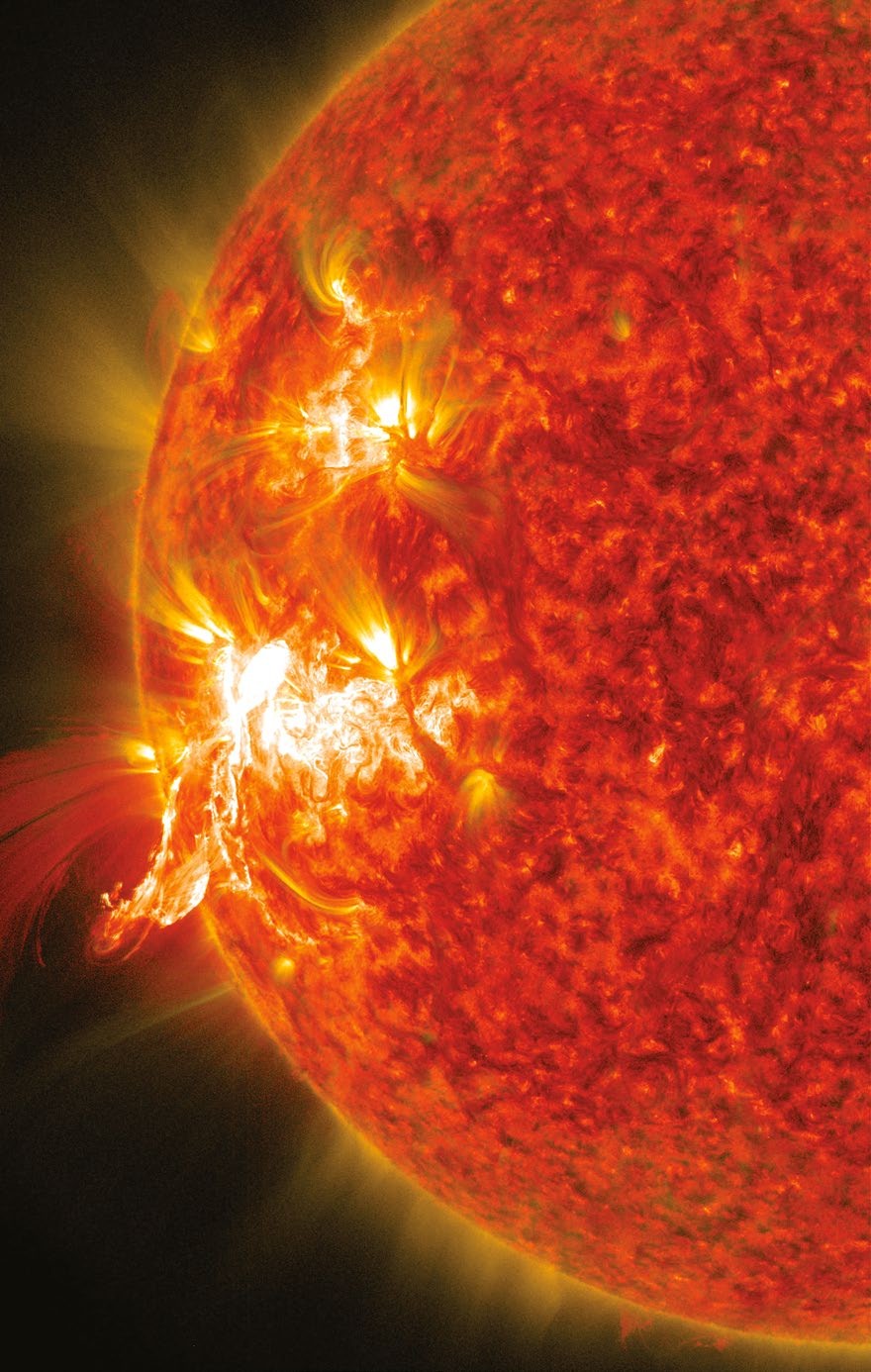
Solar flares can be observed from Earth with the right equipment
Solar flares originate from highly complex and unstable magnetic fields that arc out over sunspots. Flares are driven by the magnetic reconnection process between opposite polarity magnetic fields. The magnetic field lines can meet, fuse and also break apart to create new connections. During the reconnection process, the released magnetic energy is converted into kinetic energy, thermal energy and particle acceleration that manifests in a burst of radiation across a wide range of the electromagnetic spectrum. Solar flares erupt outwards with speeds of up to a few million miles an hour, releasing massive amounts of energy. This can be equivalent to millions of nuclear bombs exploding.
Flares are categorised according to their brightness in X-ray wavelengths. The most powerful are X-class flares that can trigger radio blackouts on Earth, and result in long-lasting radiation storms in Earth’s upper atmosphere. An M-class flare is about ten times weaker than an X-class one. These flares could cause brief radio blackouts that affect only Earth’s polar regions. X and M-class flares are often accompanied by coronal mass ejections (CMEs) that hurl enormous clouds of superheated plasma into space.